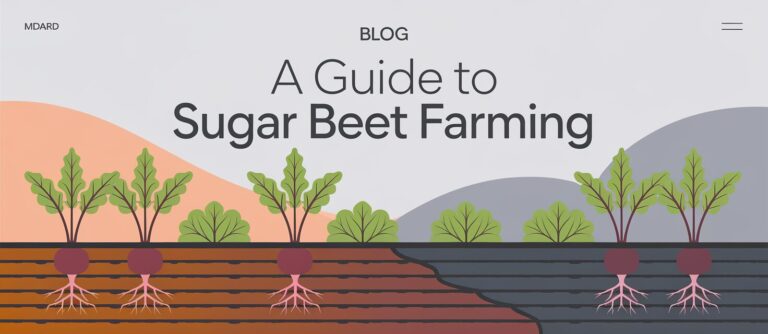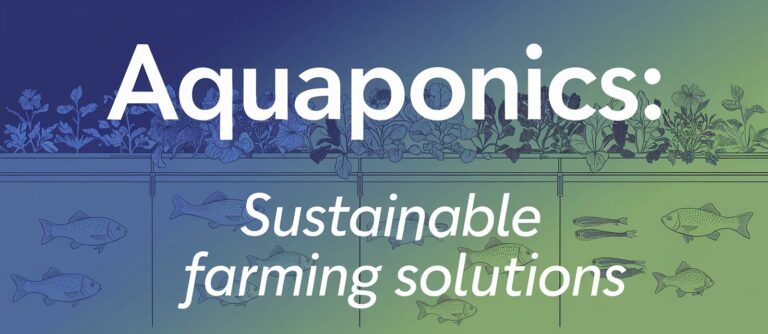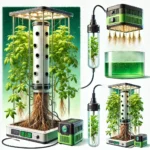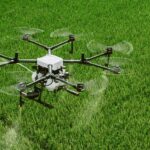Email: blogagri2@gmail.com
Eco-Friendly Farming: The Power of Biofertilizers
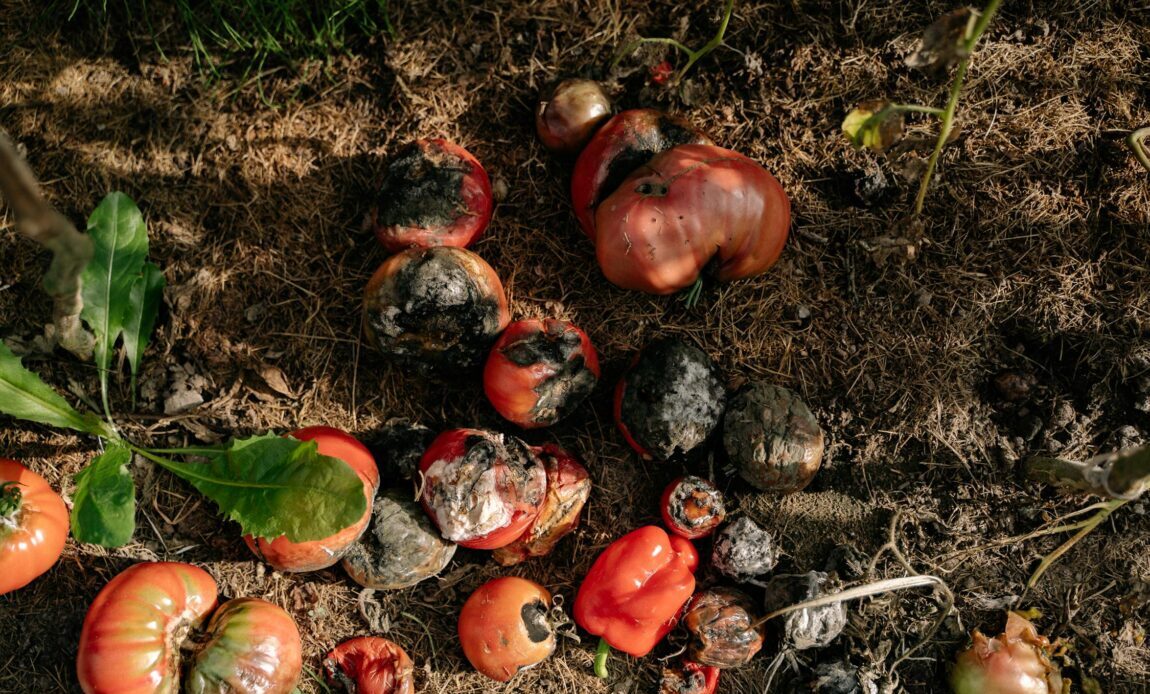
Introduction to Biofertilizers
Just consider a situation where farming production soars without the dominant application of synthetic chemicals. A situation where your crops were to get specific and grow stronger, healthier, and more robustly would go a long way. This is the potential of biofertilizers – a possibility of the remarkable natural alternatives that are transforming the live of farmers across the globe.
Biofertilizers are the ones that get the power of nature for the benefits they produce, through the use of living microorganisms to improve the fertility of soil and make the growth of the plant way better. They deliver a green solution that not only affects your land positively, but also makes a contribution to our planet’s health. With the passing of time in the agricultural sector, the concept of biofertilizers is assumed as a cornerstone in sustainable farming by all those who are interested in it.
Shall we spend the time to quite understand the world of biofertilizers–researching upon their many of advantages, the ins & outs of traditional fertilizers, and how they can be used in your farm or garden? No matter if you are a farmer who has been in the trade for a while or a gardener who has just started to be interested, this article is for you since you are ready for eco-friendly farming methods!
Benefits of Using Biofertilizers
Besides the idea that farmers and the environment benefit from the use of biofertilizers in different ways, bringing numerous advantages is the most noticeable one. One of their main pluses is soil fertility breakthrough. They naturally stimulate plant growth by improving nutrient availability, which leads to healthier crops.
Cheeringly, the drop in the amount of chemical fertilizers applied is one more benefit. Farmers may have across the board reduce that runoff through the use of some of the commonly available biofertilizers.
Soil microbiomes are also stimulated by biofertilizers, which helps to enrich the biodiversity in soil. This natural variety is a guard against pests and diseases which then lowers the need for pesticides.
Besides, they are also the ones that promote sustainable farming practices by reducing environmental degradation. With reduced use of synthetic products, the farms also become eco-friendlier over time.
Farmers who adapt to these natural products frequently realize better yields without loss of soil health or quality. By adopting the use of biofertilizers, we not only nourish the plants but also our planet’s future.
Image: { Model = ‘Flux Dev’, Image prompt = ‘A close-up photograph of a farmer’s hand holding rich, dark soil with visible microorganisms and plant roots. The image should have a warm, earthy tone with hints of orange (#FF5733) in the background lighting. The soil should appear moist and fertile, with small, green sprouts emerging. The composition should focus on the texture and life within the soil, emphasizing the benefits of biofertilizers.’}
Types of Biofertilizers and How They Work
Biofertilizers are a collection of several types and each of them has a predetermined type of microorganism whose operation is to improve the health of soil and support the growth of the plant.
Nitrogen-fixing biofertilizers are one of the most widespread ones. They are responsible for the conversion of atmospheric nitrogen to plant-beneficial ammonium compounds, for example of legumes.
Mycorrhizal fungi are the other one which form relationships with plant roots – called the symbiotic relationships. They regulate nutrient uptake, especially phosphorus, and at the same time, improve drought resistance.
Phosphate-solubilizing bacteria are also on the list. They are the ones that break down insoluble phosphates which are necessary for the soil to start supplying it to the plants.
Another group is the organic matter-based biofertilizers such as compost and vermicompost. These are rich in organic nutrients that enhance soil fertility and its compaction and moisture content.
Other are biocontrol agents that can not only trigger the growth of plants but also help to stop naturally pests and diseases. This entire action will lead to the strengthening of crops against environmental stresses as well as the arising of a continuous biodiversity pattern in the ecosystems.
The Environmental Impact of Traditional Fertilizers
Traditional fertilizers, even though they tend to be effective at increasing crop production, have been identified as posing mazes of environmental threats. Owing to their increased application, they cause soils to wear off and reach nutrient exhaustion. The result is the loss of the soil’s potentiality, and it can be the main reason for the collapse of the delicate relationships in the environment.
Certainly, the usage of (that) chemical fertilizers can cause the soil runoff that will eventually pour into the nearest water bodies. One of the byproducts of the water pollution is the algae blooms that asphyxiate the aquatic animals. The extra fertilizers are responsible for dead zones that can mainly be the places where fish and other organisms have problems to survive.
Also, the traditional fertilizers are the ones that throw the most amount of greenhouse gases into the air while they are in production and application sentinel. These gases are in fact the main cause of global warming that, in turn, has an impact on agricultural productivity throughout the world.
Fake fertilization also brings about the idea of the mono-culture system which in turn reduces the number of creatures living inside the farming environment. As a result, the pests may live without any predators and thus increased the usage of pesticides, a procedure that is highly polluting. In fact, sometimes it is much worse.
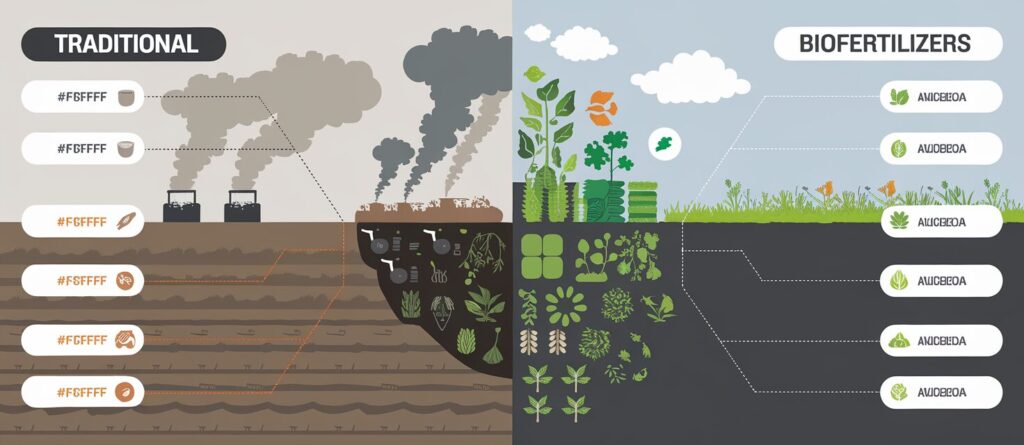
Cost Comparison: Biofertilizers vs Traditional Fertilizers
When calculating the cost of biofertilizers and traditional fertilizers, it is crucial to do both the short-term and long-term estimation.
At first glace, the biofertilizers seem to be more expensive even though they are organic and natural. The reason for this is that their effects on soil health can lead to lower costs as time goes by. Through (the) soil, crops would have more to yield and, therefore, less water is needed.
Conventional manures usually require frequent applications which is due to nutrient deficiency in the soil. This recurring expense can add up significantly over the growing season.
Biofertilizers are the most beneficial to those who want to enhance nutrient availability naturally. There is an increase in microbial activity in the soil that finally leads to sustainable agricultural practices with the use of less chemical inputs.
It is possible that farmers will also notice that the usage of biofertilizers helps them to become less dependent on pesticides by attracting plant resilience against pests and diseases. On the one hand, this cooperation brings down operational costs while on the other hand, it boosts an overall healthier ecosystem.
Success Stories of Farmers Who Have Switched to Biofertilizers
Out there in the world, farmers are adopting biofertilizers and reporting outstanding outcomes. A maize farmer in Kenya who was working on a small scale informed that he managed to double his yields after shifting from synthetic fertilizers to rhizobium and mycorrhizae. His soil health got better significantly resulting in lower input costs in the long run.
On another note, a rice grower in India faced a change in productivity due to chemicals. When he started to use normal biofertilizers like Azospirillum not only his production got higher but also the soil structure got better. This process lessened water use for the irrigation.
A grape farm manager from California drove through the use of microbial inoculants and he noticed that the vines are healthier than the ones he used to have before. The transformation pulled eco-conscious consumers who were embracing the idea of sustainable practices.
These stories show how use of biofertilizers can change the landscape of the agricultural sector, the environment, and the economy, and the strength of the crops among the growers globally.
How to Work with and Apply Biofertilizers in Your Garden
Working with biofertilizers on your farm is a very easy and simple process. To begin, check your soil quality. Perform necessary steps like how nutrients are consumed and the metabolism of bacterial communities to get accurate results.
After picking the appropriate biofertilizer type according to your plant’s requirements, the next step would be to follow these basic steps. Bioproducts such as Rhizobium for pulse crops and arbuscular mycorrhizal fungi (AMF) to induce root growth are typical.
Use the right techniques and be more aware of the best time for application. Apply the product for example by seed treatment before planting or injector it into the soil during tillage depending on products such as opting for a biofertilizer that you will mix with seeds and use for planting.
Meanwhile, irradiation of them is performed by the soil immediately before the introduction of the seed. Synchronized application with microbial activity is generally in the warm weather and the proper humidity of the soil.
Verify knowledge about proper storage and handling so that it remains effective. Often, we need to achieve the optimal environment for biofertilizing products before treatment.
Please always keep an eye on the development of crops after applying the treatment. Then the results of the evaluations will help the adoption of better applications over time in the unique farming environment and individual case.
The Use of Biofertilizers: the Problems and the Solutions.
The transfer to biofertilizers may become the source of several problems on its own. A typical concern is the wide variation in the degree of effectiveness, which can result from the soil type that is used and the choice of the crop. It is likely that the results of some biofertilizers will not be stable under different weather conditions and availability of fertilization options for the gardener.
Mainly, the main challenge is a lack of knowledge or familiarity with these products. There are farmers who might allow skepticism to scare them and they may resist the use of these products. Instead, incorporating them with the traditional fertilizers can make them adopt new methods without proper guidance.
Education is the most important thing in this respect. The knowledge of biofertilizers and their application can be realized by conducting different workshops and training.
Producers can get high-quality products specifically designed for them by developing trustful relationships with suppliers.
Patience and testing can solve doubts about yields comparison between organic and conventional options in the beginning. The relationship between these organic fertilizer producers and their users are so strong that even under the continuous support and education, they are always on the lookout for the best way to bring these bio-fertilizers on the scene.
How to make biofertilizer at home
Making biofertilizer at home can be a very satisfying pursuit. The first step is to collect organic stuff such as kitchen scraps, garden waste, and animal manure.
Being the very first step of the process, the choice of the container is crucial. A compost bin or an old barrel are a couple of good options. Arrange the materials in layers, creating good air circulation to lessen the odor and to help in the decomposing process.
Lightly moisten the layers—but do not soak them. Microorganisms will break down the material into a fertilizer rich in nutrients, which plants will absorb over time.
Another important step is to include biofertilizers like rhizobium or mycorrhizae fungi, which help plants grow better by fixing nitrogen or facilitating nutrient uptake from the soil.
After three or four weeks of stirring the brew from time to time you possess your biodynamic fertilizer for adding it to your garden or potted plants! This kind of process is not only grassy your soil but also a good method for reducing waste.
Disadvantages
Despite the remarkable advantages of biofertilizers, it is equally important to think about their disadvantages.
The primary drawback with biofertilizers is that they may be ineffective. Different environmental conditions, types of soil, and crop varieties are some of the possible factors. This means that even the best biofertilizer can vary in the outcome from farm to farm and make it less useful.
Furthermore, biofertilizers often take more time to come up with the expected results as compared to the normal use of fertilizers. The fact that farmers find themselves in a situation where they need quick yields they may not use biofertilizers of the kind that have longer delays to the effect. In addition, the widespread production of these products is not trouble-free and at times, it is difficult to find reliable sources of common biofertilizers.
Furthermore, improperly applied biofertilizers by some farmers also pose another problem. Absence of sufficient education given to farmers on how to use such products properly might lead to the poor performance of these products.
Despite the fact that many people believe in biofertilizers and consider them to be more environmentally friendly, some of them have quite a few drawbacks in case of mismanagement, misuse or overuse. This was the example of the antibiotics and the rest of the chemicals that have been a problem in the past.
The awareness of both, the advantages and disadvantages makes it possible to give a deliberate decision about whether to integrate biofertilizers into farming practices. Since there are many ways of farming sustainably, the wise combination of these methods will bring both the rich ecosystems and the good harvests of the farms in the long term.

